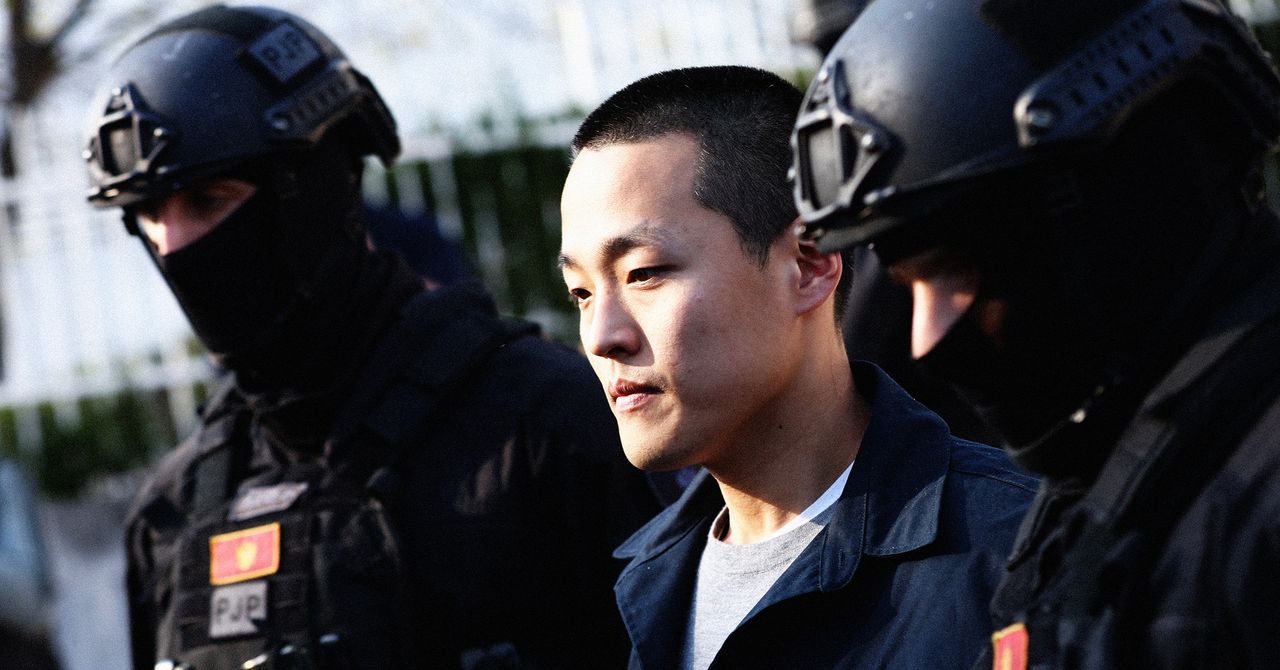Tech
Double-layer electrode design powers next-gen silicon-based batteries for faster charging and longer range EVs
New research, led by Queen Mary University of London, demonstrates that a double-layer electrode design, guided by fundamental science through operando imaging, shows remarkable improvements in the cyclic stability and fast-charging performance of automotive batteries, with strong potential to reduce costs by 20–30%.
The research, published today in Nature Nanotechnology, was led by Dr. Xuekun Lu, Senior Lecturer in Green Energy at Queen Mary University of London.
In the study, the researchers introduce an evidence-guided double-layer design for silicon-based composite electrodes to tackle key challenges in the Si-based electrode— a breakthrough with strong potential for next-generation high-performance batteries.
The evolution of automotive batteries has been driven by ever-increasing demand for driving range and charging speed since EVs took off 15 years ago. Silicon electrodes can provide 10 times higher theoretical capacity and faster charging, but their large-scale deployment is held back by substantial volume changes of up to 300% during charge/discharge cycles. This means they degrade quickly and don’t last long.
Assisted by multiscale multimodal operando imaging techniques, this research reveals unprecedented insights into the electro-chemo-mechanical processes of the graphite/silicon composite electrodes. Guided by these improved mechanistic understandings, a novel double-layer architecture is proposed, which addresses key challenges in material design, exhibiting significantly higher capacity and lower degradation compared to conventional formulations.
Dr. Xuekun Lu, who led the study, said, “In this study, for the first time, we visualize the interplay between microstructural design and electro-chemo-mechanical performance across length scales—from single particle to full electrode—by integrating multimodal operando imaging techniques.
“This study opens new avenues for innovating 3D composite electrode architectures, pushing the boundaries of energy density, cycle life, and charging speed in automotive batteries, and thereby accelerating large-scale EV adoption.”
Professor David Greenwood, CEO of the WMG High Value Manufacturing Catapult Center commented, “High silicon anodes are an important technology pathway for high energy density batteries in applications like automotive. This study offers a much deeper understanding of the way in which their microstructure affects their performance and degradation, and will provide a basis for better battery design in the future.”
More information:
Xuekun Lu et al, Unravelling electro-chemo-mechanical processes in graphite/silicon composites for designing nanoporous and microstructured battery electrodes, Nature Nanotechnology (2025). DOI: 10.1038/s41565-025-02027-7
Citation:
Double-layer electrode design powers next-gen silicon-based batteries for faster charging and longer range EVs (2025, October 24)
retrieved 24 October 2025
from https://techxplore.com/news/2025-10-layer-electrode-powers-gen-silicon.html
This document is subject to copyright. Apart from any fair dealing for the purpose of private study or research, no
part may be reproduced without the written permission. The content is provided for information purposes only.
Tech
Top B&H Photo Discounts and Deals for December 2025

B&H Photo is one of our favorite places to shop for camera gear. If you’re ever in New York, head to the store to check out the giant overhead conveyor belt system that brings your purchase from the upper floors to the registers downstairs (yes, seriously, here’s a video). Fortunately B&H Photo’s website is here for the rest of us with some good deals on photo gear we love.
Save on the Latest Gear at B&H Photo
B&H Photo has plenty of great deals, including Nikon’s brand-new Z6III full-frame mirrorless camera for $2,196.95 ($300 off). The Z6III (8/10, WIRED Recommends) is huge update for the Z6 line, and a great all-around camera for Nikon fans. There are also great deals like the Nikon Zf (8/10, WIRED Recommends) full frame mirrorless camera for $200 off, or the Nikon Z8 for $600 off.
Not in the market for the latest Nikon cameras? There are plenty of other deals, like our favorite action camera, the GoPro Hero 13 for $70 off (7/10, WIRED Recommends), and Sony’s a7R V full frame mirrorless camera for $400 off.
How Do I Get Free Shipping at B&H?
One of the many perks of B&H Photo is their generous free shipping policy. Most orders at B&H over $49 qualify for free expedited shipping to the lower 48 states. The savings just keep coming, as most items totaling under $49 also qualify for free standard shipping in the contiguous US.If for some reason your order doesn’t qualify for free shipping, you can review alternative shipping options during checkout—full shipping policy details can be found here.
Best Times to Find B&H Promo Codes and Discounts
Like most retailers, B&H Photo offers some of their best deals of the year during Black Friday and Cyber Monday, but that doesn’t mean there aren’t other ways to save outside of this sale period. There’s still time to jump on extended holiday sales, with up to $300 24-hour camera discounts, and featured price drops across all accessories. While there may not be any B&H promo codes available at the moment, there are plenty of other ways to save at B&H.
Get the latest B&H Preorder in 2025
If you’re a photographer, videographer, or creator, you’re not going to want to be left out of some of the most anticipated camera releases of the year, including the Canon EOS R6 Mark III Mirrorless Camera, Canon 45mm f/1.2 STM Lens (Canon RF), and Canon EOS R6 Mark III Mirrorless Camera with 24-105mm f/4 Lens, and more. Make sure you visit the above link to get the full scoop of camera details and releases, as well as pre-order them while you still can.
Exclusive B&H Student Discounts
If you’re a student with an EDU email, sign up for B&H Photo’s student discount program, which offers free shipping on most orders and exclusive discounts.
Score Deals on Used and Refurbished Gear
B&H Photo also deals in used and refurbished gear. Deals (and conditions) vary, and I have never purchased a used item this way, but if you’re looking to save some money, that’s another way to go.
Trade-in Your Old Gear at B&H
The flip side of B&H Photos used deals is that you can sell your old gear. I put in my old Sony a7 II and was offered $210, which is more than I would have thought. Your offer is contingent on it matching the condition you claim, but if you’ve got gear you aren’t using anymore, this is a way to turn it into some extra cash.
Snap Up Limited-Time Deals in the Deal Zone
There are always rotating and limited-time B&H Photos deals at this url, which B&H Photo calls the Deal Zone.
Tech
Trump Signs Executive Order That Threatens to Punish States for Passing AI Laws

President Donald Trump signed a highly anticipated executive order on Thursday that sets in motion a plan to establish a national regulatory framework for artificial intelligence while undercutting states’ abilities to enact their own rules.
The order, titled “Ensuring a National Policy Framework for Artificial Intelligence,” creates an AI litigation task force within the Justice Department to directly challenge state AI laws the administration finds to conflict with federal policy. It also directs the Department of Commerce to craft guidelines that could make states ineligible for future broadband funding if they pass “onerous” AI laws.
The push for sweeping federal preemption of state AI laws has largely been fueled by AI investors, conservative policy shops, and tech industry trade groups. These groups have argued that a patchwork approach to AI regulation could stunt Silicon Valley’s AI boom and reduce America’s competitiveness on the global stage. White House AI and crypto adviser David Sacks has been one of the most vocal proponents of a light-touch approach to AI regulation.
“The EO gives your administration tools to push back on the most onerous and excessive state regulations,” Sacks told Trump during Thursday’s signing ceremony. “We’re not going to push back on all of them. For example, kids safety we’re going to protect.”
The order is similar in many respects to an earlier draft obtained by WIRED but with a few key differences. The executive order instructs Sacks and Michael Kratsios, the assistant to the president for science and technology, to prepare a legislative recommendation establishing a federal policy framework for AI. One of the new additions is a carve-out within this legislative recommendation asking Congress not to preempt state AI laws that aim to protect children, promote data center infrastructure, and encourage state governments to procure AI tools.
“We want one central source of approval, and we have great Republican support. I think we probably have Democrat support too, because it’s common sense,” Trump said during Thursday’s signing ceremony. “Every time you make a change, and it could be a very reasonable change, you still won’t get it approved if you have to go to 50 states. This centralizes it.”
In the absence of federal regulations, officials from states across the country have pushed through their own investigations and legislation to govern the use and development of AI. Trump’s executive order specifically calls out certain state AI laws—such as Colorado’s SB24-205, which aims to limit “algorithmic discrimination” in AI models—as an attempt to “embed ideological bias.”
Several other state AI laws may also fall in the crosshairs of this executive order. California governor Gavin Newsom signed a law in September requiring large tech companies to publish safety frameworks around their AI models. In June, New York’s legislature passed a bill that would empower the state’s attorney general to bring civil penalties of up to $30 million against AI developers that fail to meet safety standards. That bill is currently sitting on New York governor Kathy Hochul’s desk, awaiting her signature or veto—though she’s reportedly considering amendments that could weaken the bill significantly.
Tech
Crypto Magnate Do Kwon Sentenced to 15 Years in Prison

South Korean crypto entrepreneur and prosecuted fraudster Do Kwon was sentenced to 15 years in prison by a US federal judge in the Southern District of New York on Thursday.
Kwon cut a solemn figure as he was escorted into the courtroom by US Marshals, his head bowed, his cheeks sunken as if he’d lost a significant amount of weight. He wore a bright lemon-colored prison jumpsuit over a long-sleeve shirt, with cuffs around his waist and hands.
In August, Kwon pleaded guilty to defrauding investors who purchased crypto coins issued by his company, Terraform Labs. In May 2022, the abrupt collapse of those coins wiped out $40 billion and sent the crypto economy into a tailspin that bankrupted numerous other companies.
“Kwon’s fraud was colossal in scope, permeating virtually every facet of Terraform’s purported business,” US prosecutors wrote in a recent court filing. “His rampant lies left a trail of financial destruction in their wake.”
Given the chance to address the court on Thursday, Kwon said he took sole responsibility for the fraud. After thanking his former coworkers and supporters, some of whom had gathered in the public gallery, he became emotional. His lawyers, to his left and right, rubbed his back.
The offenses to which Kwon pleaded guilty carry a maximum sentence of 25 years in prison. Before the hearing, prosecutors had petitioned for a 12-year prison term. But the presiding judge, Paul Engelmayer, ruled that a more punitive sentence was required in order to deter future crypto fraudsters.
“This case will be there as a reminder of breaking bad and what happens,” Engelmayer told the courtroom. “To the next Do Kwon, if you commit fraud, you will lose your liberty for a long time.”
As he was bundled into an elevator outside the courtroom after receiving his sentence, Kwon appeared to be holding back tears. The chain that hung between his feet rattled against the floor.
Not-So-Stablecoin
Kwon started Terraform in 2018, alongside cofounder Daniel Shin. Two years later, the company announced plans to launch TerraUSD (UST), a stablecoin whose value was supposedly pegged to the US dollar by way of an algorithm. The algorithm would effectively tie UST to a second coin issued by the firm, LUNA. A dollar’s worth of LUNA could be exchanged for a dollar’s worth of UST, and vice versa. If UST were to ever slip below $1, traders would be incentivized to buy LUNA until the target value was restored.
“It was an intriguing and very novel mechanism,” Noelle Acheson, an analyst who previously worked at the crypto brokerage Genesis, told WIRED last year. “Many smart people believed it would work.”
In May 2022, the price-balancing system belched. When traders sold large quantities of UST, it slipped from its dollar peg, leading to a panicked sell-off that drove the price practically to zero. In a now-infamous tweet, Kwon tried to stop the selloff, writing, “deploying more capital—steady lads.” But the value of UST and LUNA plummeted, wiping $40 billion from the market.
-

 Sports7 days ago
Sports7 days agoAustralia take control of second Ashes Test | The Express Tribune
-

 Politics5 days ago
Politics5 days ago17 found dead in migrant vessel off Crete: coastguard
-

 Entertainment1 week ago
Entertainment1 week agoSabrina Carpenter recalls ‘unbelievable’ experience with pal Taylor Swift
-

 Fashion1 week ago
Fashion1 week agoBangladesh’s economic outlook cautiously optimistic: Govt
-

 Fashion4 days ago
Fashion4 days agoGermany’s LuxExperience appoints Francis Belin as new CEO of Mytheresa
-

 Politics4 days ago
Politics4 days agoThailand launches air strikes against Cambodian military: army
-

 Tech1 week ago
Tech1 week agoThe Trump Administration Wants Immigrants to Self-Deport. It’s a Shit Show
-

 Tech6 days ago
Tech6 days agoWIRED Roundup: DOGE Isn’t Dead, Facebook Dating Is Real, and Amazon’s AI Ambitions


















